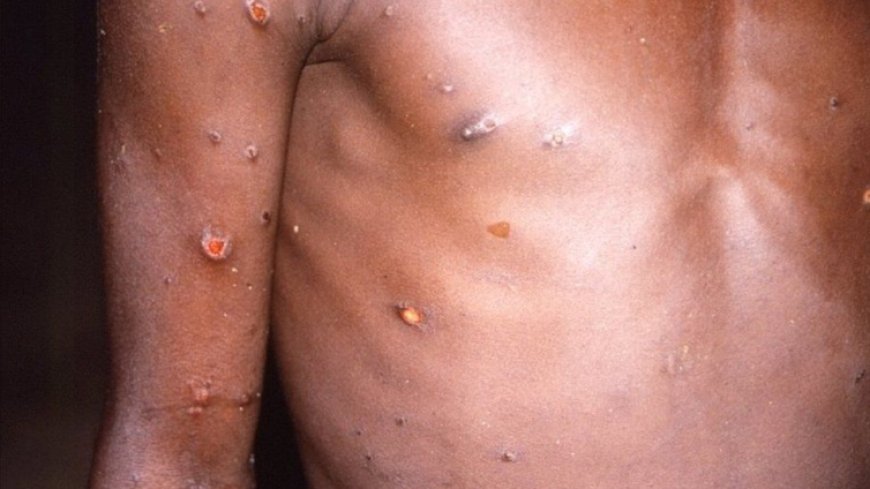Ghana Health Service Heightens Surveillance Amid Mpox Surge in Sub-Region
The Ghana Health Service (GHS) intensifies surveillance and emergency response systems following a surge in Mpox cases across the sub-region. Learn more about the origins, transmission, symptoms, and prevention of the disease.

The Ghana Health Service (GHS) has heightened its surveillance and emergency response systems in response to a recent surge in Mpox cases across the sub-region. This action follows the declaration of the disease as a “public health emergency” of security concern by the African Centre for Disease Control and Prevention (Africa CDC) on Tuesday.
Given this development, it is crucial for everyone to stay informed and take appropriate precautions. Below is an overview of the Mpox virus, its origins, symptoms, transmission, and prevention measures.
Origin
The Monkeypox virus was first identified in 1958 at the State Serum Institute in Copenhagen, Denmark, during an investigation into a pox-like disease among monkeys. It was, however, first detected in humans in 1970 in Zaire (now the Democratic Republic of Congo) in a 9-year-old boy, in an area where smallpox had been eradicated two years earlier.
In the spring of 2003, cases of monkeypox were reported in the Midwest of the United States, marking the first known outbreak outside Africa. Many of those infected had close contact with pet prairie dogs.
Infection
Infection with the Mpox virus typically occurs through direct contact with the blood, bodily fluids, or cutaneous or mucosal lesions of infected animals. Humans have also contracted the virus through the handling of infected monkeys, rats, and squirrels, with rodents being the major reservoir of the virus. Eating inadequately cooked meat from infected animals is another potential risk factor.
Transmission
Transmission of the Mpox virus occurs primarily through respiratory droplets during prolonged face-to-face contact, placing household members of infected individuals at greater risk. Transmission can also occur through direct contact with contaminated objects or through inoculation, including via the placenta, leading to congenital Mpox.
Secondary, or human-to-human transmission, results from close contact with the respiratory secretions, skin lesions, or contaminated materials of an infected person. However, there is currently no evidence that person-to-person transmission alone can sustain the infection in human populations.
Duration and Symptoms
The incubation period for Mpox typically ranges from 6 to 16 days, though it can vary from 5 to 21 days. Mpox is usually a self-limited disease, with symptoms lasting between 14 and 21 days.
The infection can be divided into two distinct periods:
- Invasion Period (0-5 days): Characterized by fever, intense headache, lymphadenopathy (swelling of the lymph nodes), back pain, muscle aches (myalgia), and a profound lack of energy (asthenia).
- Skin Eruption Period (within 1-3 days of fever onset): The rash progresses through various stages, often starting on the face and then spreading to other parts of the body, including the palms of the hands and soles of the feet.
Risk Factors
People living in or near forested areas may have low-level or indirect exposure to infected animals, which can lead to asymptomatic infection. The case fatality rate has varied widely between outbreaks but has generally been less than 10%, mostly affecting young children. Younger age groups tend to be more susceptible to Mpox.
Diagnosis
Definitive diagnosis of Mpox requires laboratory testing to identify the virus, which can be done through various methods. Differential diagnoses may include other rash illnesses such as smallpox, chickenpox, measles, bacterial skin infections, scabies, syphilis, and medication-related allergies.
Treatment and Vaccine
There are currently no specific treatments or vaccines available for Mpox. However, smallpox vaccination has been shown to be 85% effective in preventing Mpox in the past, though this vaccine is no longer available to the general public after the global eradication of smallpox.
Prevention
In the absence of specific treatments or vaccines, the best way to reduce the risk of infection is through public awareness and education about risk factors and preventive measures. This includes regular hand washing, particularly after caring for or visiting sick individuals, and ensuring that all animal products are thoroughly cooked before consumption.
Healthcare workers and others exposed to Mpox patients or their samples should consider immunization against smallpox as a preventive measure, in consultation with their national health authorities.
The GHS continues to monitor the situation closely and urges the public to stay informed and adhere to recommended preventive measures to protect themselves and their communities from the Mpox virus.
What's Your Reaction?




































































